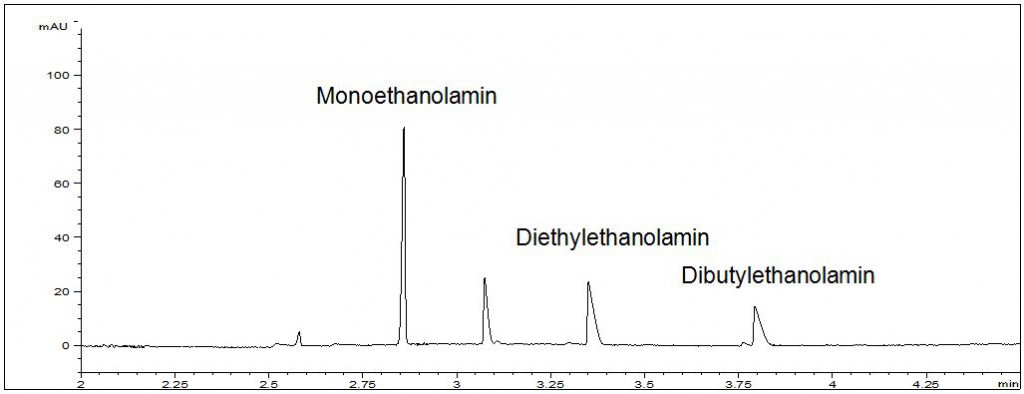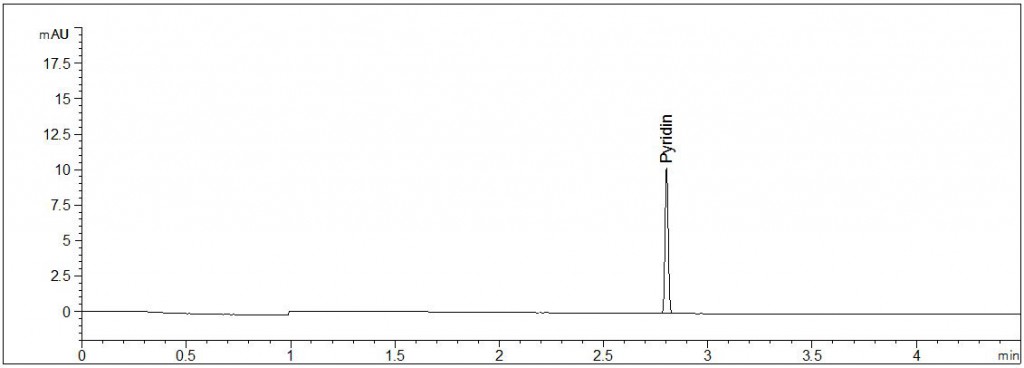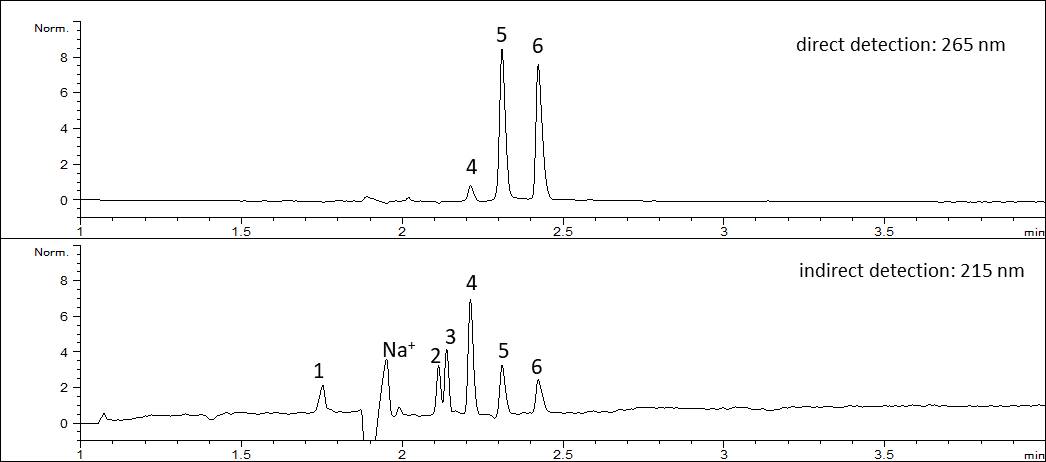Depending on their structure amines can be analysed using indirect or direct UV detection. For aliphatic amines several electrolytes for indirect UV detection are available, whereas aromatic amines can be analysed with low limits of detection using direct UV detection in combination with so called bubble-cell capillaries. To generate sufficient ionisation of the amies it ist necessary to choose an electrolyte with a pH value below the pKB value of the amine of interest.
Aliphatic Amines
- Separation: CZE
- Electrolyte: e.g. aminopyridine
- Capillary: fused silica, 50 µm ID, 64 cm in total
- Detection: indirect UV, 260 nm
- Description: The presented aliphatic amines were determined using indirect UV detection.
Download: Amine_Standard.pdf
Amines in an emulsion
- Separation: CZE
- Electrolyte: e.g. aminopyridine
- Capillary: fused silica, 50 µm ID, 64 cm in total
- Detection: indirect UV, 260 nm
- Description: For samples with complex matrices capillary electrophoresis shows advantages over other methods due to the fact that the capillary is rinsed after each run and all sample residues are removed. Therefore reproducible separations are possible despite of extreme sample loads. For the applications given below only the sample dilution was necessary for the preparation of the milky samples.
Download: Amine_in_einer_Emulsion.pdf
Pyridine
- Separation: CZE
- Electrolyte: e.g. phosphate, pH 2,5
- Capillary: fused silica, 50 µm ID, bubble cell, 48 cm in total
- Detection: direct UV, 254 nm
- Description: Aromatic amines like pyridine can be determined with a low limit of detection using direct UV detection and the so called bubble cell capillary. For pyridine the limit of detection is found to be 20 ppb.
Download: Amine_Pyridin.pdf
4-Dimethylaminopyridine (DMAP)
- Separation: CZE
- Electrolyte: e.g. phosphate, pH 2,5
- Capillary: fused silica, 50 µm ID, bubble cell, 40 cm in total
- Detection: direct UV, 280 nm
- Description: Aromatic amines like 4 dimethylaminopyridine (DMAP) can be determined with a low limit of detection using direct UV detection and the so called bubble cell capillary.
Download: DMAP-Spektrum.pdf
Calibration of 4-Dimethylaminopyridine (DMAP)
- Separation: CZE
- Electrolyte: e.g. phosphate, pH 2,5
- Capillary: fused silica, 50 µm ID, bubble cell, 40 cm in total
- Detection: direct UV, 280 nm
- Description: The calibration was executed in a range of 0,5 ppm up to 50 ppm DMAP.
Download: DMAP-Kalibrierung.pdf
Determination of aliphatic mono-, di- and triamines as well as cyclic amines in acidic buffer with copper as chelating agent using simultaneous direct and indirect UV detection
- Separation: CZE
- Electrolyte: phosphate, copper
- Capillary: fused silica, 50 µm ID, bubble cell, 48 cm in total
- Detection: direct UV, 265 nm – indirect UV 215 nm
- Description: As aliphatic and cyclic amines show no UV activity detection is done by a chelating complex with copper in an acidic buffer. In the following electropherograms the separation of the amines in a concentration of 10 mg/l is given. Indirect detection shows the complete separation of the amines whereas with direct detection only substance 4, 5 and 6 are visible. Fortunately, for substance 6 higher intensity is achieved in direct detection. Skillfull choice of the detection parameters allows the simultaneous determination in direct and indirect detection.
Download: Amine_Copper.pdf





